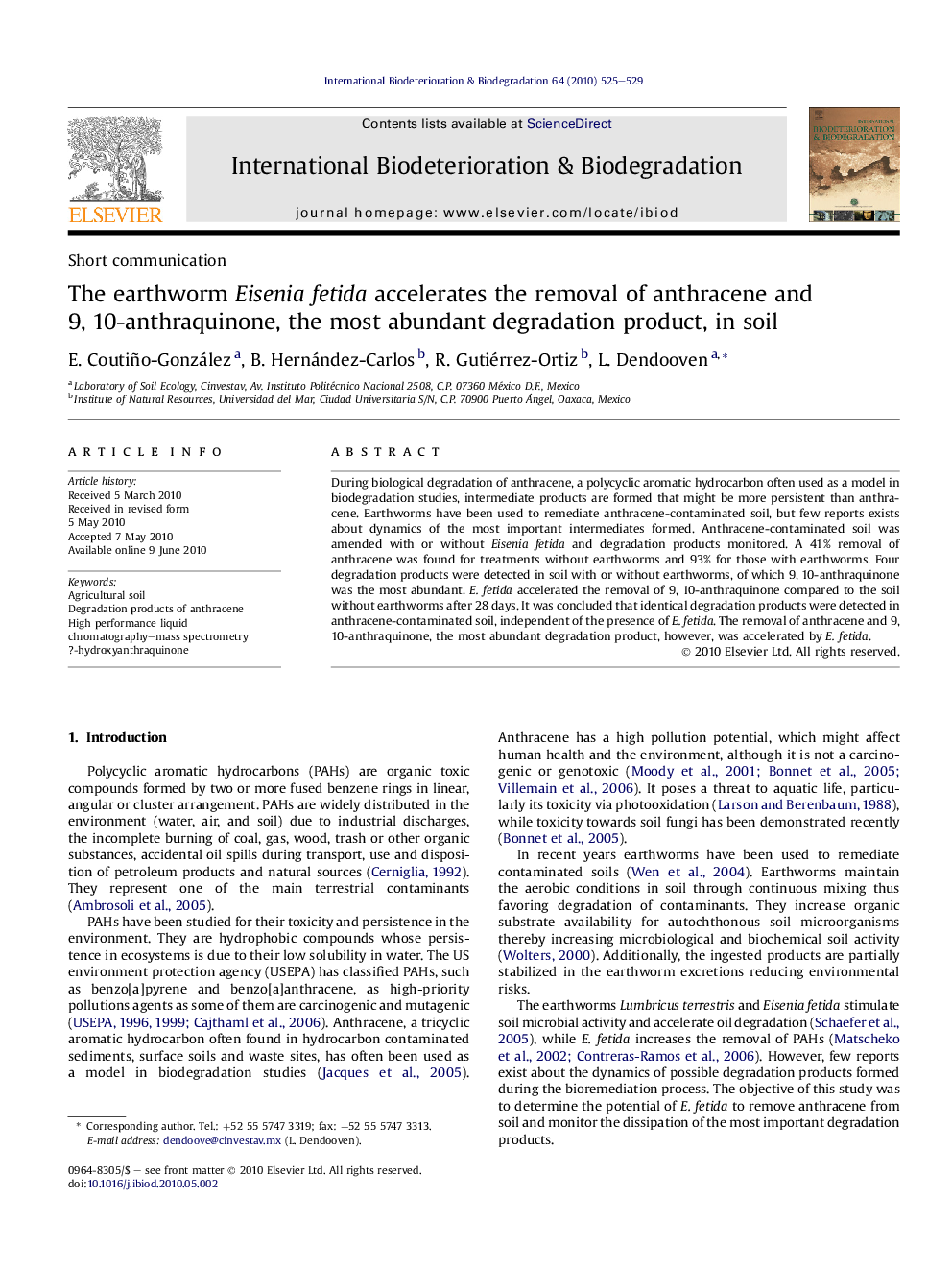| Article ID | Journal | Published Year | Pages | File Type |
|---|---|---|---|---|
| 4365558 | International Biodeterioration & Biodegradation | 2010 | 5 Pages |
During biological degradation of anthracene, a polycyclic aromatic hydrocarbon often used as a model in biodegradation studies, intermediate products are formed that might be more persistent than anthracene. Earthworms have been used to remediate anthracene-contaminated soil, but few reports exists about dynamics of the most important intermediates formed. Anthracene-contaminated soil was amended with or without Eisenia fetida and degradation products monitored. A 41% removal of anthracene was found for treatments without earthworms and 93% for those with earthworms. Four degradation products were detected in soil with or without earthworms, of which 9, 10-anthraquinone was the most abundant. E. fetida accelerated the removal of 9, 10-anthraquinone compared to the soil without earthworms after 28 days. It was concluded that identical degradation products were detected in anthracene-contaminated soil, independent of the presence of E. fetida. The removal of anthracene and 9, 10-anthraquinone, the most abundant degradation product, however, was accelerated by E. fetida.
